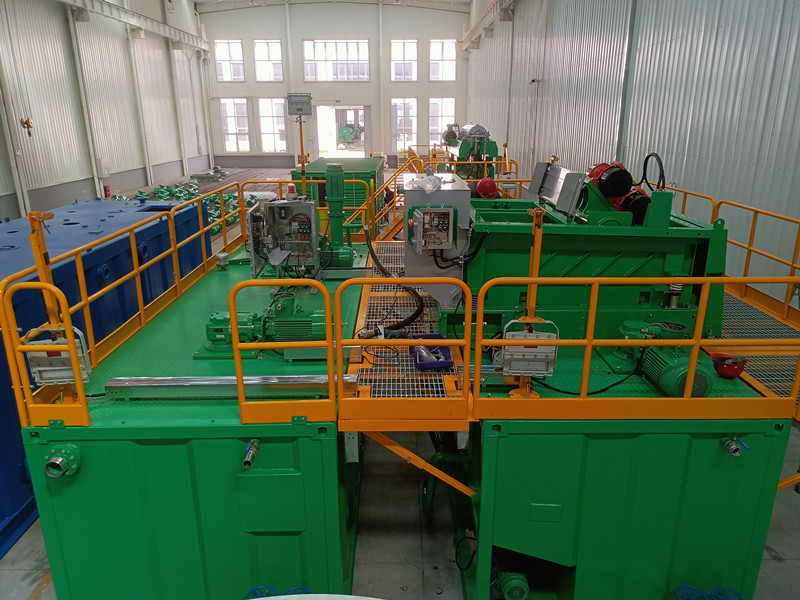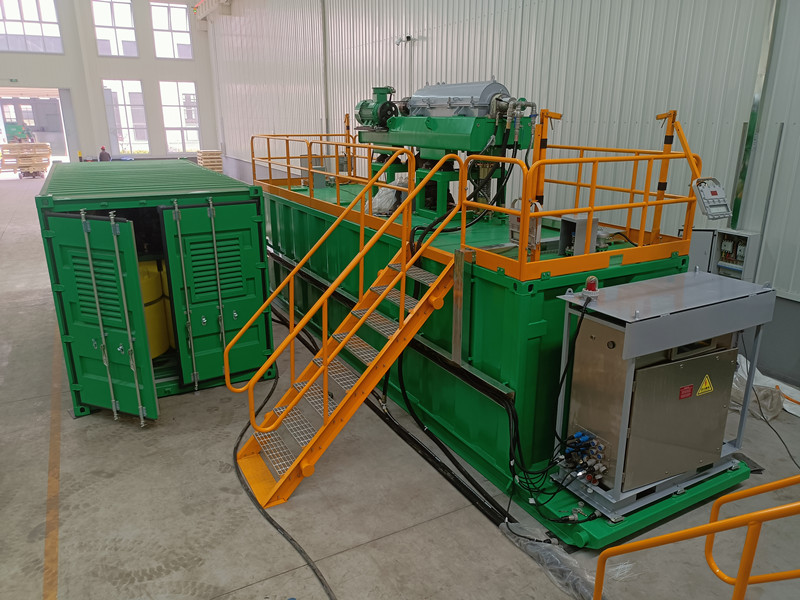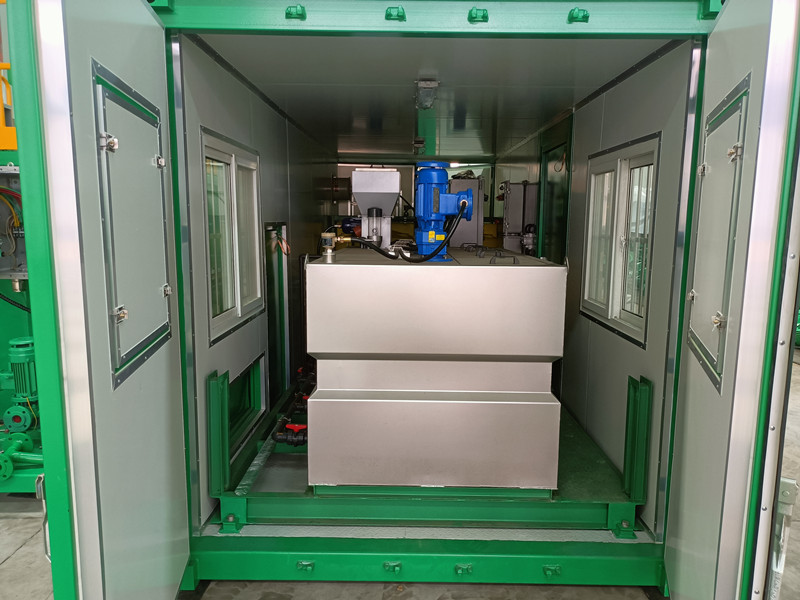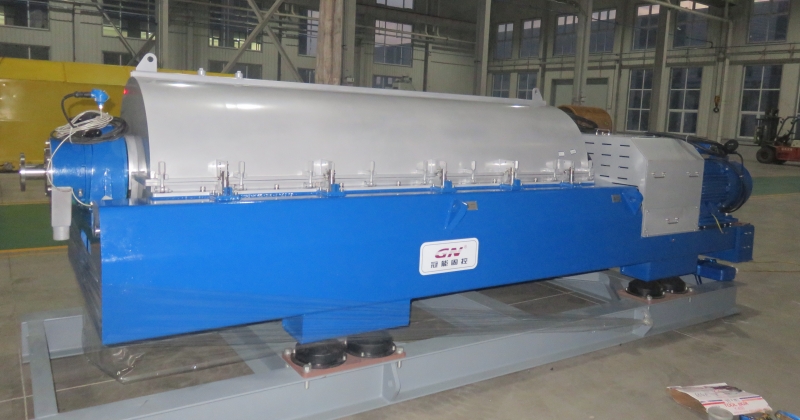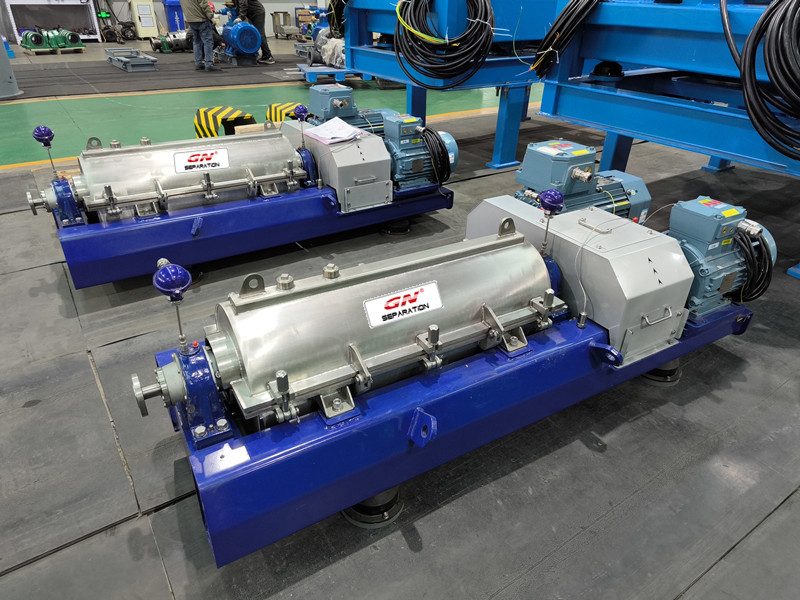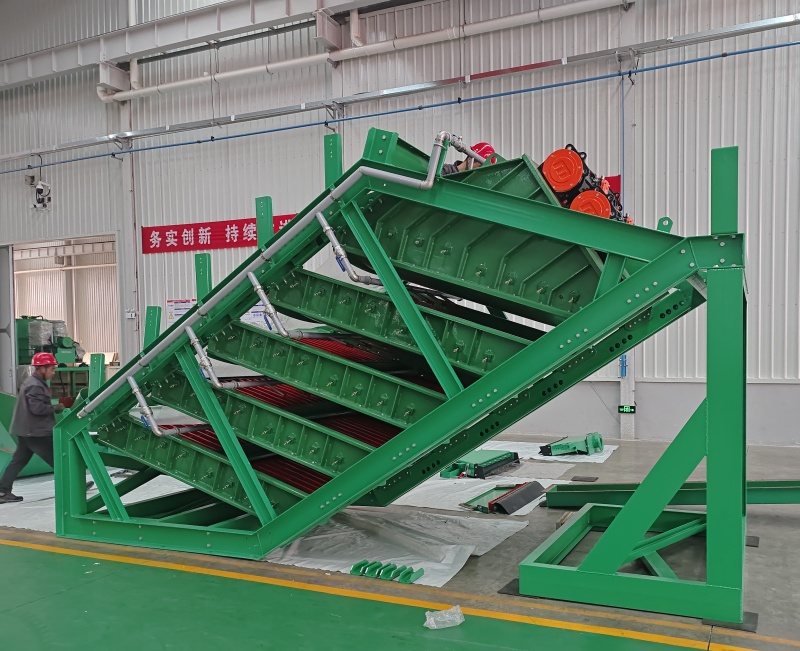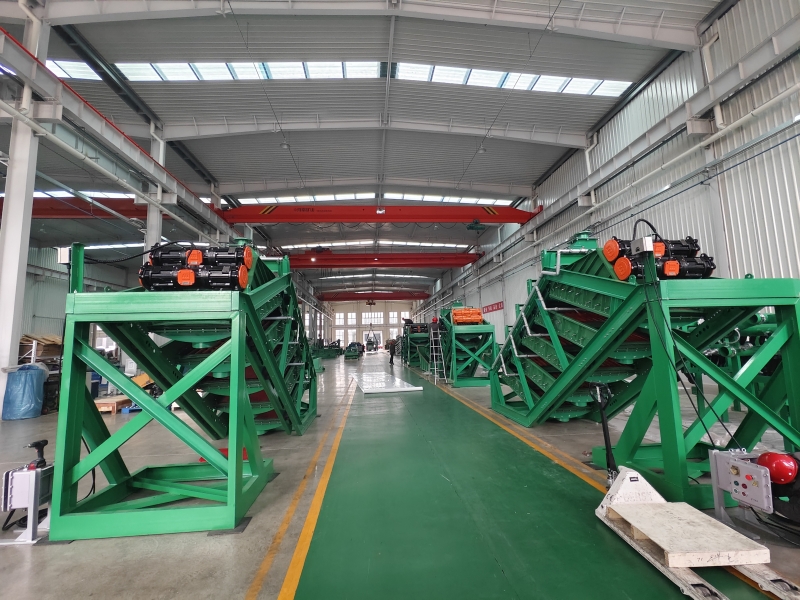GN Separation has emerged triumphant from the recently concluded Aisawater 2024 exhibition in Malaysia, marking a significant milestone in its journey of innovation and global expansion. Continue reading
Monthly Archives: April 2024
Introduction of no-load test run for decanter centrifuge
The no-load test run for decanter centrifuge is a necessary step for the inspection of decanter centrifuge. The introduction below is recommended by GN Separation.
GN 5m3 Oily Sludge Treatment System for Middle East Customer
GN Separation has effectively supplied a 5m3 oily sludge treatment system recently to a client located in the Middle East. This system is tailored to efficiently manage and extract valuable constituents from the residuals of oil sludge treatment extraction. This delivery signifies another stride in GN’s endeavors to broaden its footprint in global markets, furnishing solutions that uphold both ecological responsibility and resource reclamation.
The system comprises four key components: a premixing tank, the GNZS706 fine Shale Shaker, the GNLW364 three-phase decanter centrifuge, and a containerized chemical dosing system. Each element plays an indispensable role in the system’s functionality, offering crucial processing capabilities across various phases of sludge treatment.
At the onset of the process, the premixing tank readies the oily sludge by blending and homogenizing it, ensuring effective segregation of its constituents. This initial step is pivotal for facilitating the subsequent mechanical separation carried out by the GNZS706 fine shale shaker, streamlining the removal of larger particulate matter and thereby alleviating the burden on subsequent separation stages.
The nucleus of the system, the GNLW364 three-phase decanter centrifuge, assumes control to precisely partition the sludge into oil, water, and solids. Leveraging its high-speed rotational capacity and advanced design, the centrifuge attains remarkable separation efficiency, critical for optimizing oil retrieval and curbing residual waste.
Wrapping up the configuration, the containerized chemical dosing system administers specific chemicals required to dismantle emulsions in the sludge, augmenting separation quality and enhancing the purity of the extracted oil and water.
This installation not only underscores GN Separation’s dedication to furnishing high-caliber environmental solutions but also enhances the operational prowess of its clients within the oil and gas realm. The system’s capacity to enhance oil recovery rates and mitigate environmental repercussions delivers significant value to regions grappling with the complexities of managing by-products from the oil industry.
For further insights into GN Separation’s array of products and their versatile applications, please visit GN Separation Equipment Co., Ltd.
Trouble Shooting Of Decanter Centrifuge Gear Box
Common failures of Decanter centrifuge gear boxes include tooth surface wear, tooth surface gluing and abrasions, tooth surface contact fatigue, bending fatigue and broken teeth. The causes are manufacturing errors, poor assembly, poor lubrication, overload, and operational errors. Due to the characteristics of the structure and working principle of the gear, its vibration signal is very complicated, and the vibration fault diagnosis of it needs to be analyzed in both the time domain and the frequency domain. Whether the gear is in a normal or abnormal state, the frequency of gear meshing stiffness always exists.
Therefore, the gearbox should be diagnosed based on the gearing frequency component of the gear. Due to the complexity of the gear signal, the fault has many effects on the vibration signal, especially due to the effect of amplitude modulation and frequency modulation, there are many sideband structures on the vibration spectrum of the gear, which requires specific analysis during the analysis and diagnosis Components to achieve accurate diagnosis of gearbox faults.
The characteristic frequency of the Decanter centrifuge gear box failure is as follows:
1. The normal frequency spectrum shows the 1X and meshing frequencies of all the rotating shafts. There are speed sidebands on both sides of the gear meshing frequency, and the peak value is small.
2. Gear wear. The natural frequency of the gear appears, and there is a speed sideband of the shaft where the worn gear is located. When the wear is obvious, a higher peak sideband will appear near the meshing frequency.
3. Decanter centrifuge gear eccentricity. There is a sideband of higher amplitude near the meshing frequency, indicating that the gear is eccentric or the shaft is not parallel, and the peak of the meshing frequency increases with the increase of the load.
4. The decanter centrifuge gears are misaligned. The vibration of the second or higher harmonics of the meshing frequency is almost always excited, and the peak value at the 2X or 3X meshing frequency spectrum line is large, and there is a side frequency of the rotation frequency interval.
Stack Vibrating Screen for China Shanxi Coal Mining Company
GN Separation recently accomplished a noteworthy achievement with the successful production completion of a new batch of high-frequency stack vibrating screens, meticulously crafted for application in coal mines situated within the Shaanxi province. This development signifies a significant technological leap in the coal mining sector, as these stack vibrating screens are specifically engineered to optimize the separation of coal particles, thereby revolutionizing fine coal recovery processes while concurrently reducing waste production.
The distinguishing features of GN’s high-frequency stack vibrating screens greatly contribute to their unparalleled performance and efficiency. Foremost, the stacked design of these screens offers a myriad of advantages, notably enabling a more compact footprint. This streamlined design not only reduces the space required for installation but also facilitates seamless operation within the confines of space-constrained mining environments, which are prevalent in many coal mines across the globe.
Furthermore, GN’s vibrating screens incorporate cutting-edge technology to ensure impeccable performance and reliability. By leveraging high-quality excitation motors such as Martin or OLI motors, these screens are engineered to deliver extended periods of uninterrupted service, thereby bolstering continuous production processes while simultaneously minimizing downtime – a critical factor in maintaining operational efficiency within coal mining operations.
Moreover, the inclusion of a polyurea resin coating in the construction of these screens provides unparalleled resistance to abrasion and corrosion, thus guaranteeing sustained performance and durability even under the most demanding operating conditions. Additionally, the implementation of a unique polyurethane screen mesh further enhances the screens’ durability and flexibility, facilitating effective screening of materials and minimizing instances of blockages, thereby maximizing throughput and ultimately resulting in heightened recovery rates and superior product quality.
In addition to offering vibrating screens tailored for the mining sector, GN Separation also provides an extensive range of complementary solutions, including dewatering centrifuges designed specifically for coal slime suspension dewatering applications, thereby further enhancing its comprehensive suite of offerings for the mining industry.
For comprehensive details regarding GN Separation’s mining vibrating screens and accompanying solutions, we invite interested parties to reach out to us directly, where our team of experts stands ready to provide tailored assistance and support.
